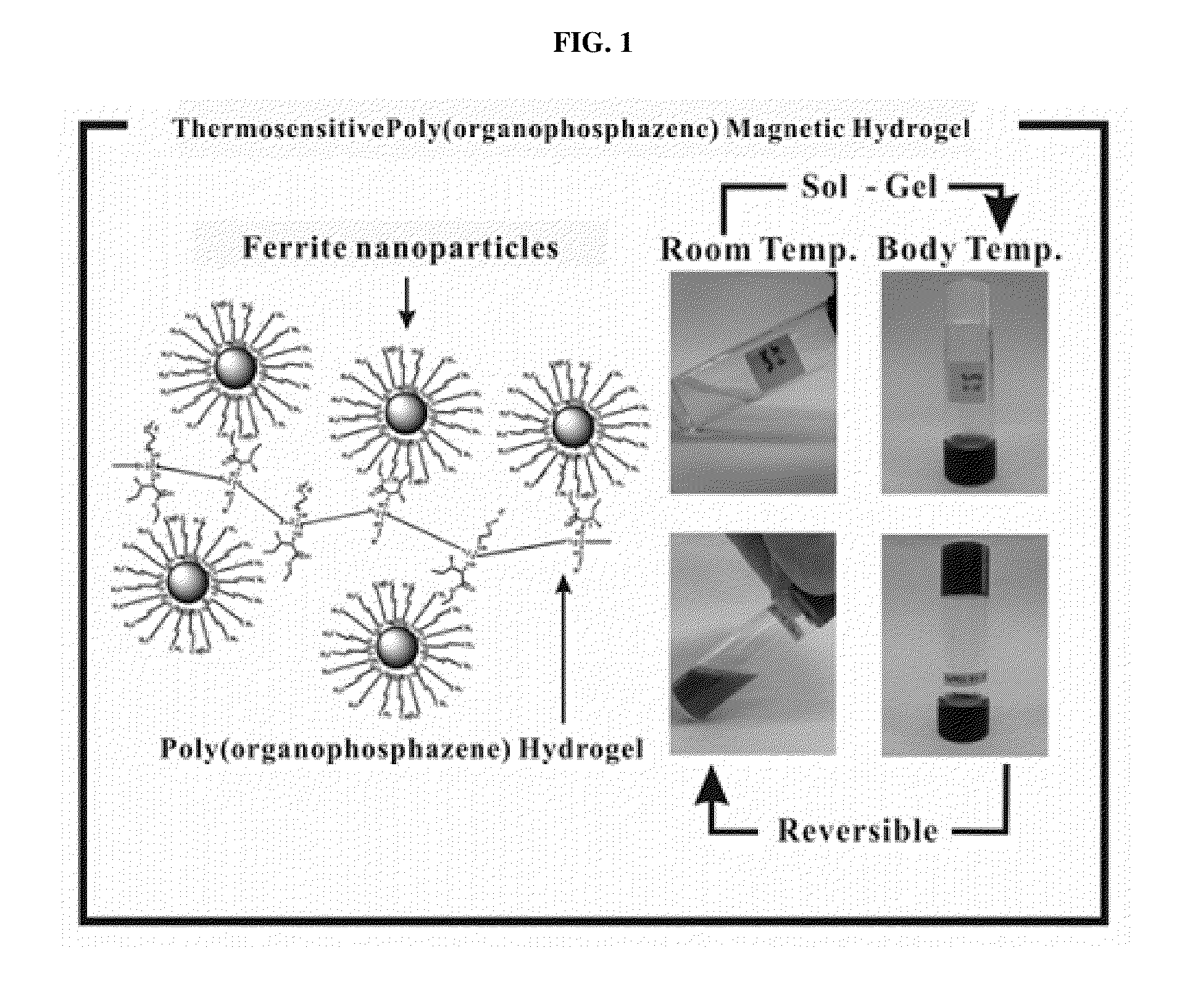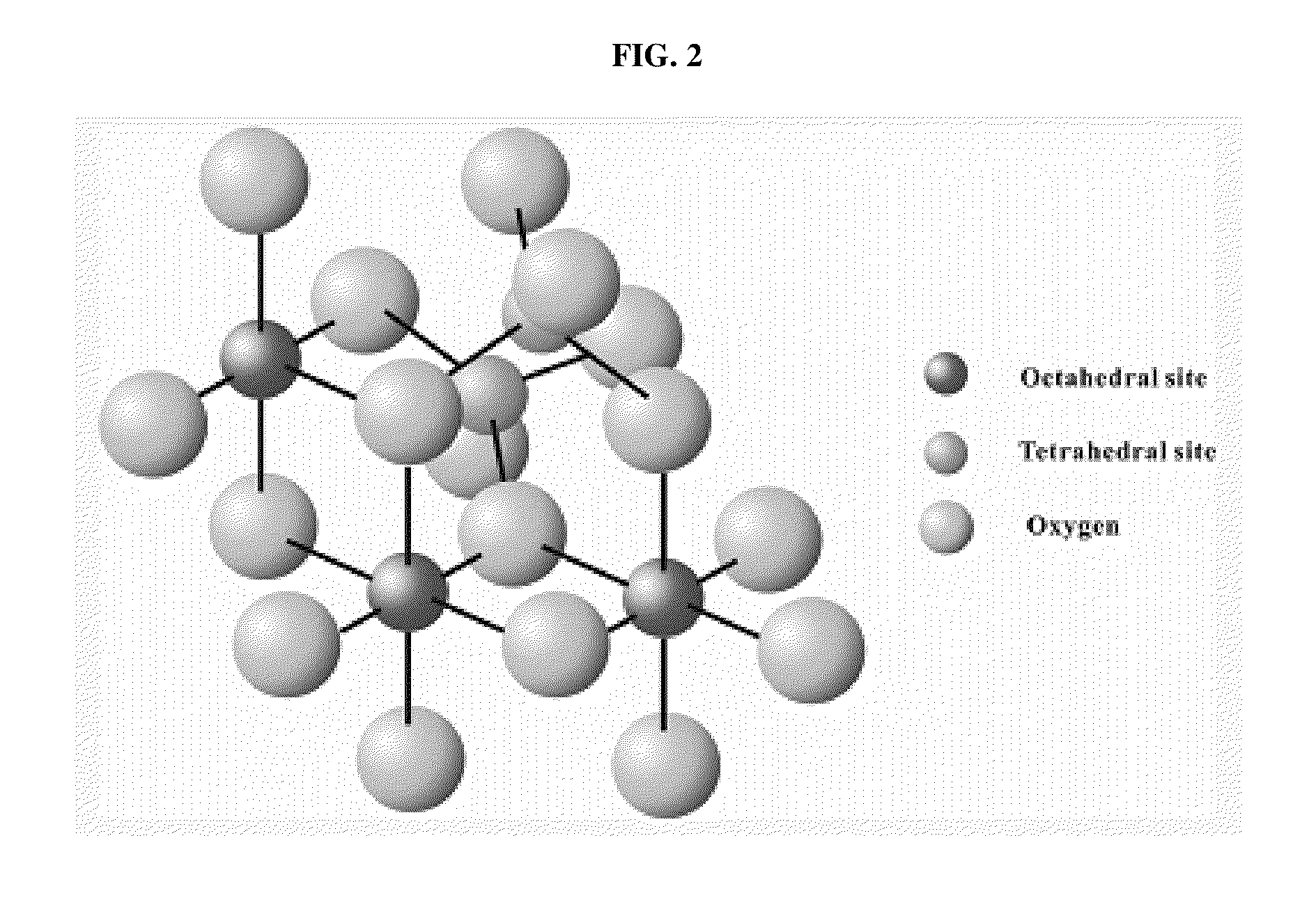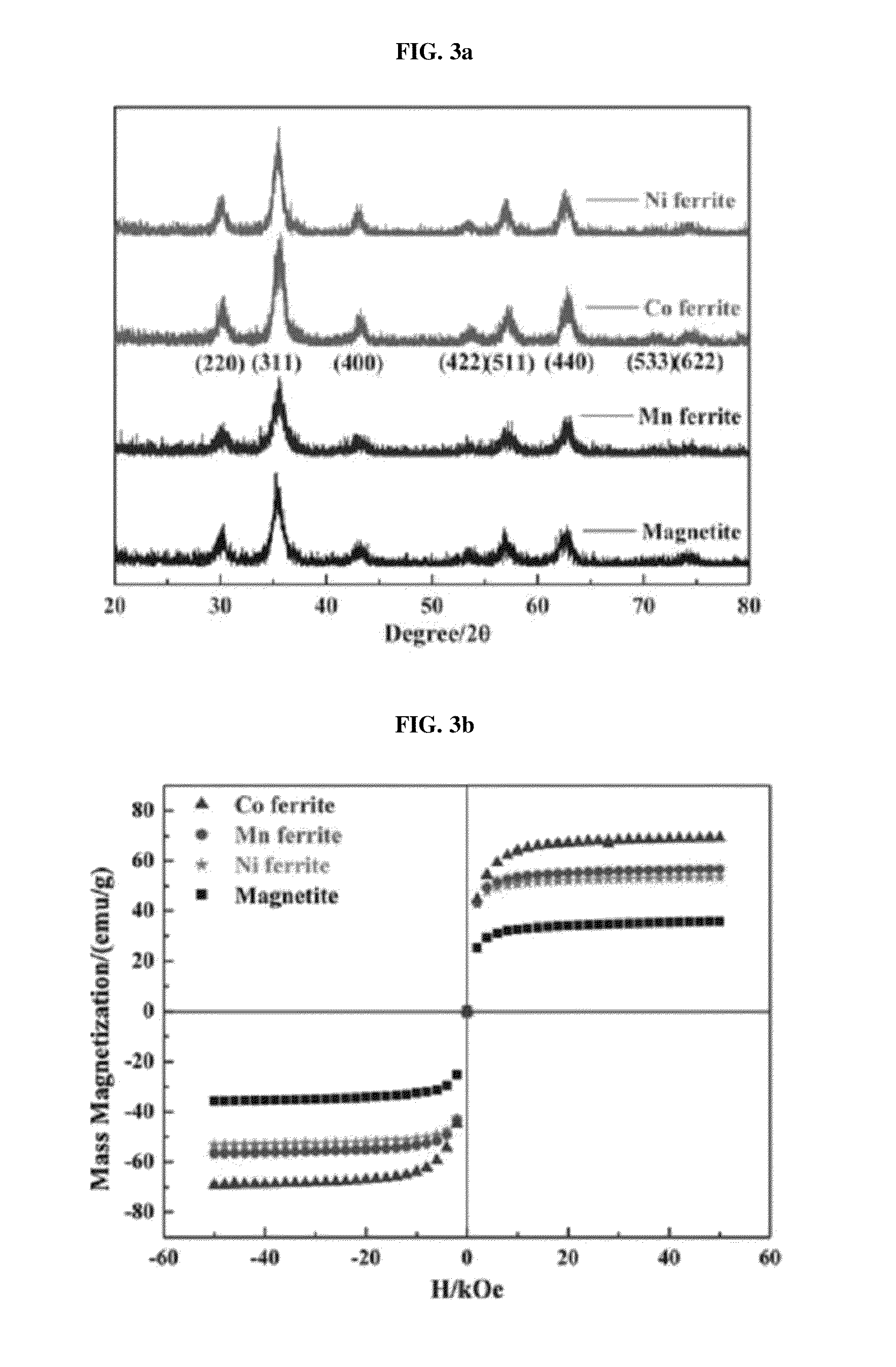Biodegradable and thermosensitive poly(organophosphazene)-superparamagnetic nanoparticle complex, preparation method and use thereof
a thermosensitive, polymer technology, applied in the field of poly (organophosphazene)superparamagnetic nanoparticle complex, can solve the problem of not being able to use a non-invasive method to monitor the behavior of polymers within the body
- Summary
- Abstract
- Description
- Claims
- Application Information
AI Technical Summary
Benefits of technology
Problems solved by technology
Method used
Image
Examples
example 1
Preparation of ‘Bound-Type’ Magnetic-[NP(IleOEt)1.01(AMPEG550)0.64(AEMA)0.35]n with the Hydrophobic Bond of Poly[(Isoleucine Ethyl Ester)(Aminomethoxy Polyethyleneglycol 550)(Aminoethylmethacrylate)Phosphazene] and Covalt Ferrite (CoFe2O4) Superparamagnetic Nanoparticle
[0189]1-1) Preparation of [NP(IleOEt)1.01(AMPEG550)0.64(AEMA)0.35]n
[0190]Dried isoleucine ethyl ester hydrochloride salt (3.00 g, 15.54 mmol) was dissolved in 100 ml of anhydrous tetrahydrofuran, and then, triethylamine (4.65 g, 46.03 mmol) was added thereto. Poly(dichloro phosphazene)(2.00 g, 17.26 mmol) was dissolved in 50 ml of anhydrous tetrahydrofuran, and then slowly added dropwise to the obtained isoleucine ethyl ester hydrochloride salt solution in dry ice-acetone bath at −60° C., allowing to react for 48 hours with slowly increasing the temperature to the room temperature.
[0191]After checking the reaction progress by checking 31P-NMR, the solution of aminomethoxypolyethylene glycol of molecular weight 550 (4...
example 2
Preparation of ‘Mixed Type’ Magnetic-[NP(IleOEt)1.10(GlyLacOEt)0.02(AMPEG550)0.88]n by Physical Mixing Poly[(Isoleucinethylester)(Ethyl-2-(O-Glycyl)Lactate)(Aminomethoxypolyethyleneglycol 550)] with Covalt Ferrite (CoFe2O4) Superparamagnetic Nanoparticle
[0241]2-1) Preparation of [NP(IleOEt)1.10(GlyLacOEt)0.02(AMPEG550)0.88]n.
[0242]Poly(dichloro phosphazene)(2.00 g, 17.26 mmol) was dissolved in 100 ml tetrahydrofuran, and then isoleucine ethyl ester hydrochloride salt solution (4.08 g, 17.78 mmol) and triethylamine (13.98 g, 69.04 mmol) were added to the obtained isoleucine ethyl ester hydrochloride salt solution in dry ice-acetone bath, allowing to react for 48 hours at a room temperature.
[0243]The reaction solution was filtered to remove a generated triethylamine hydrochloride salt.
[0244]The remaining solution was concentrated under decompression until the solvent was mostly removed. The obtained concentrate solution was dissolved in tetrahydrofuran (10 ml) and an excess of hexane ...
PUM
| Property | Measurement | Unit |
|---|---|---|
| diameter | aaaaa | aaaaa |
| weight-average molecular weight | aaaaa | aaaaa |
| temperature | aaaaa | aaaaa |
Abstract
Description
Claims
Application Information
 Login to View More
Login to View More - R&D
- Intellectual Property
- Life Sciences
- Materials
- Tech Scout
- Unparalleled Data Quality
- Higher Quality Content
- 60% Fewer Hallucinations
Browse by: Latest US Patents, China's latest patents, Technical Efficacy Thesaurus, Application Domain, Technology Topic, Popular Technical Reports.
© 2025 PatSnap. All rights reserved.Legal|Privacy policy|Modern Slavery Act Transparency Statement|Sitemap|About US| Contact US: help@patsnap.com



